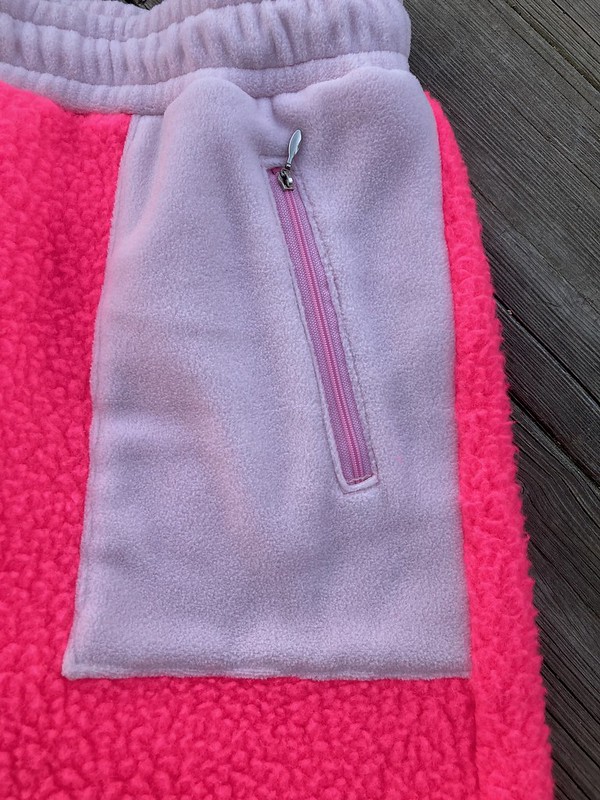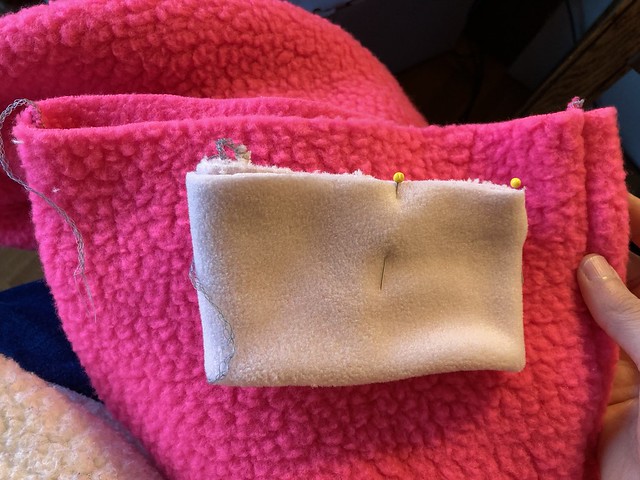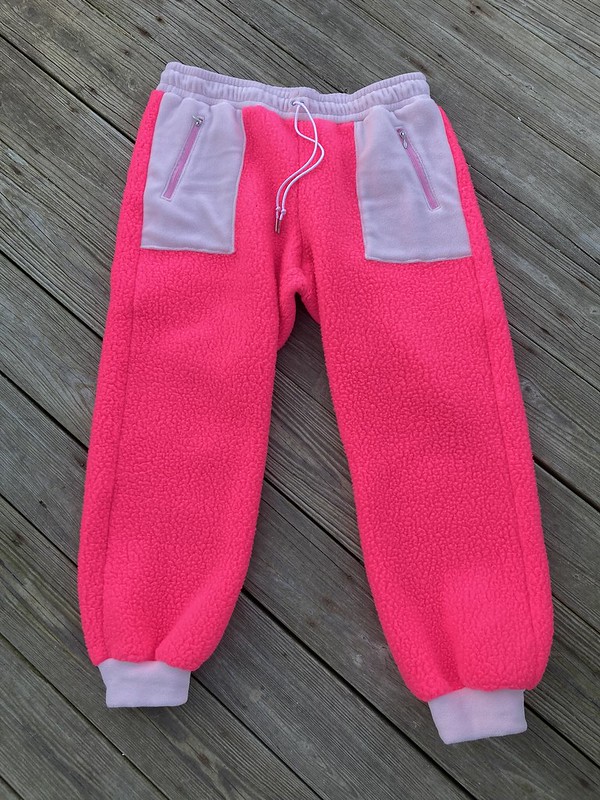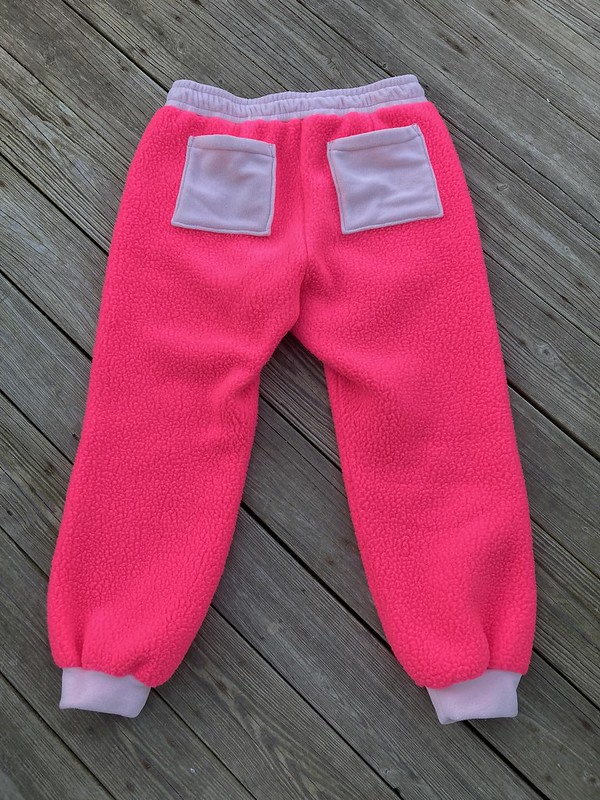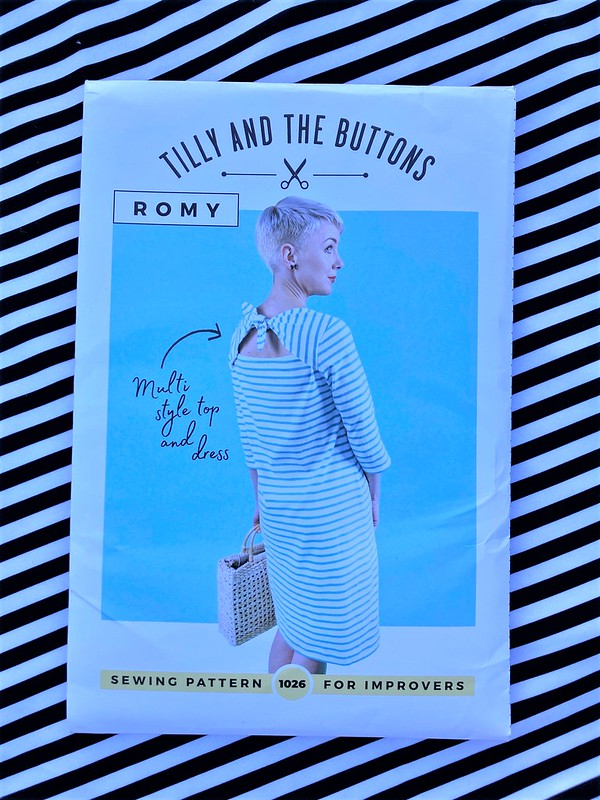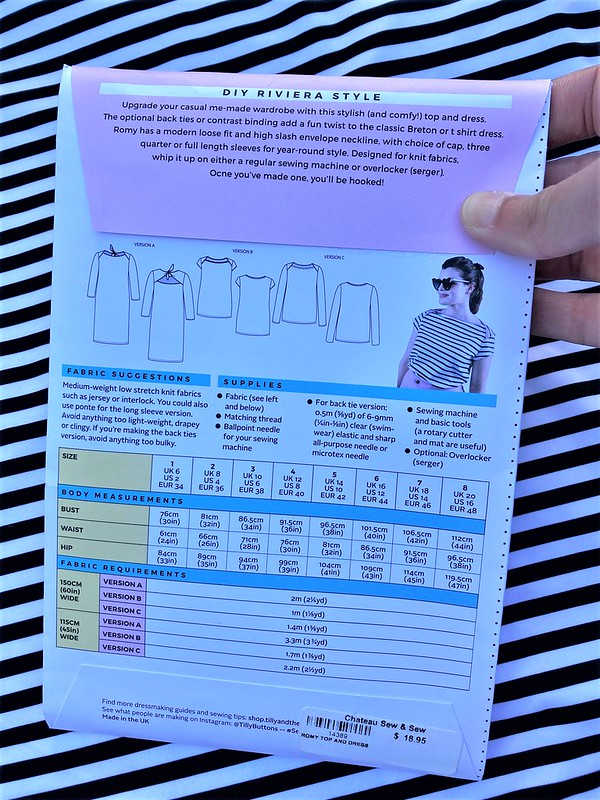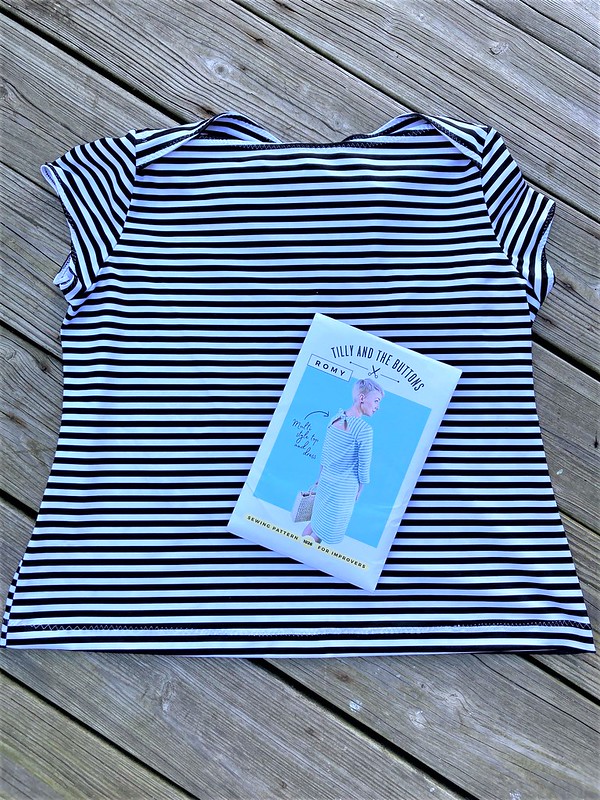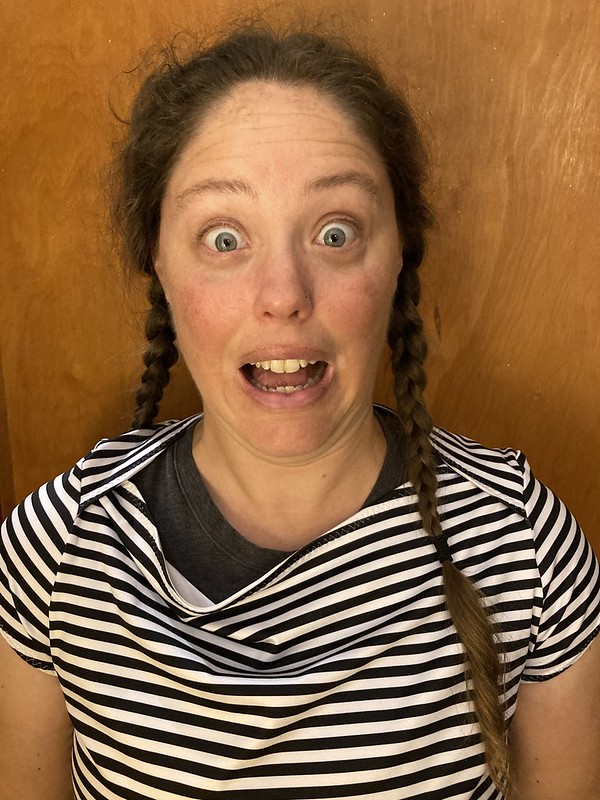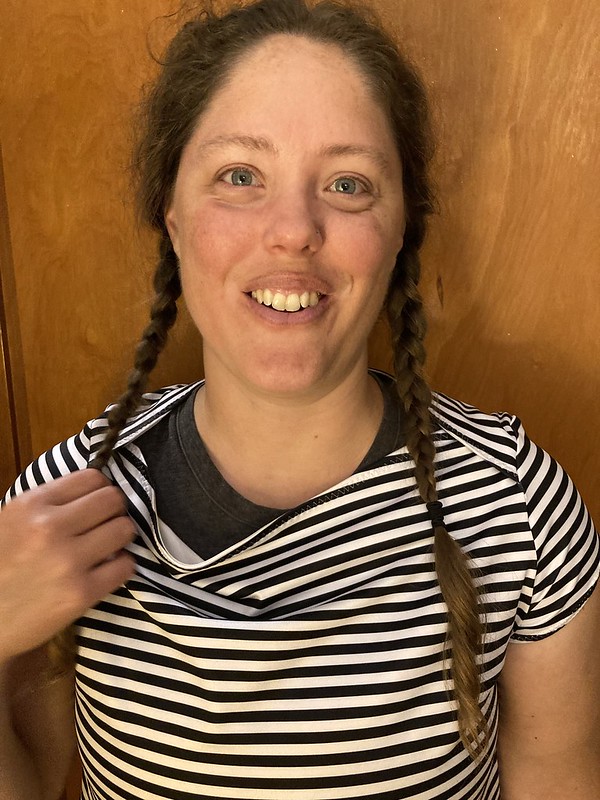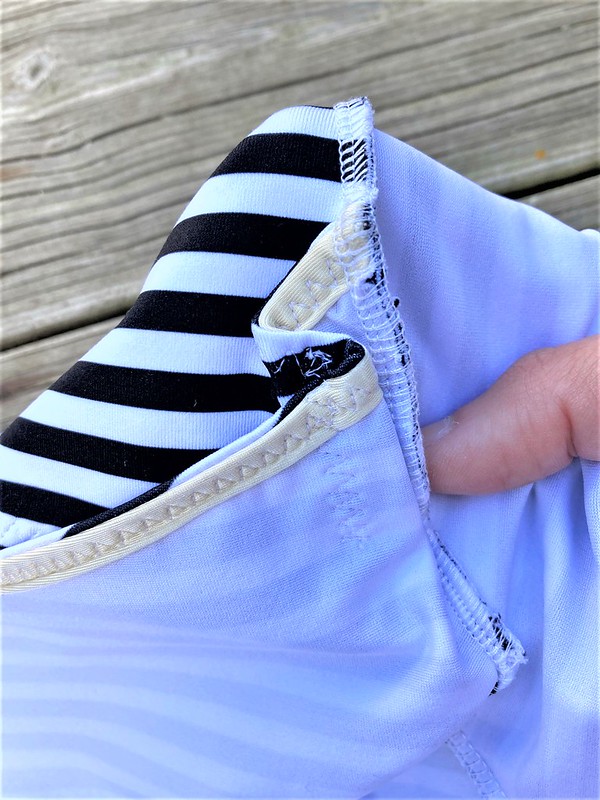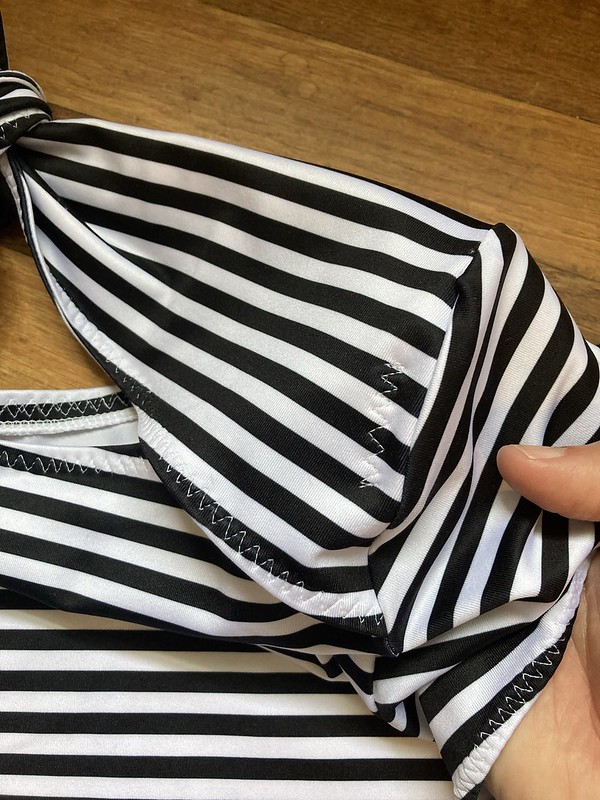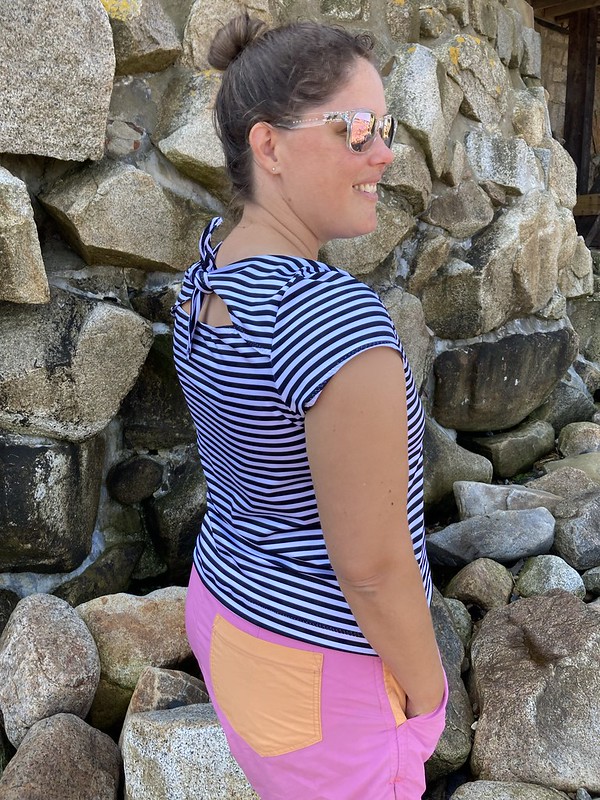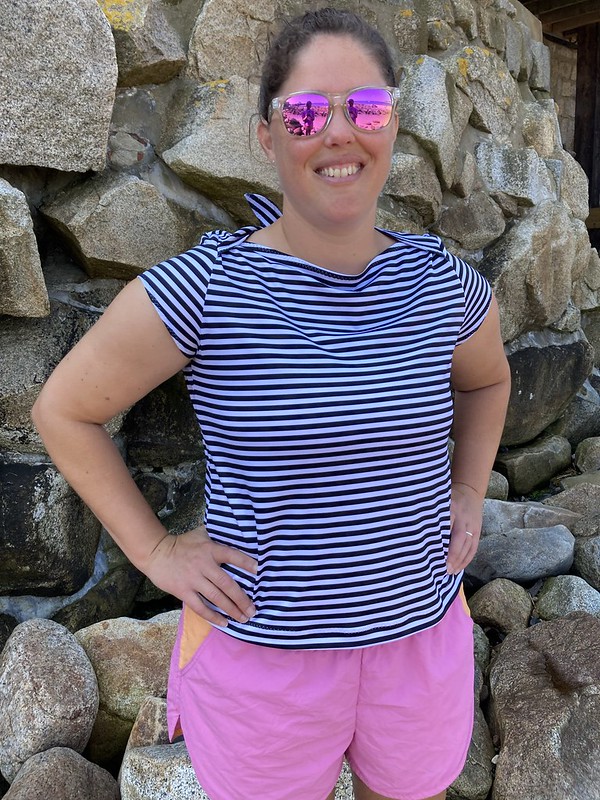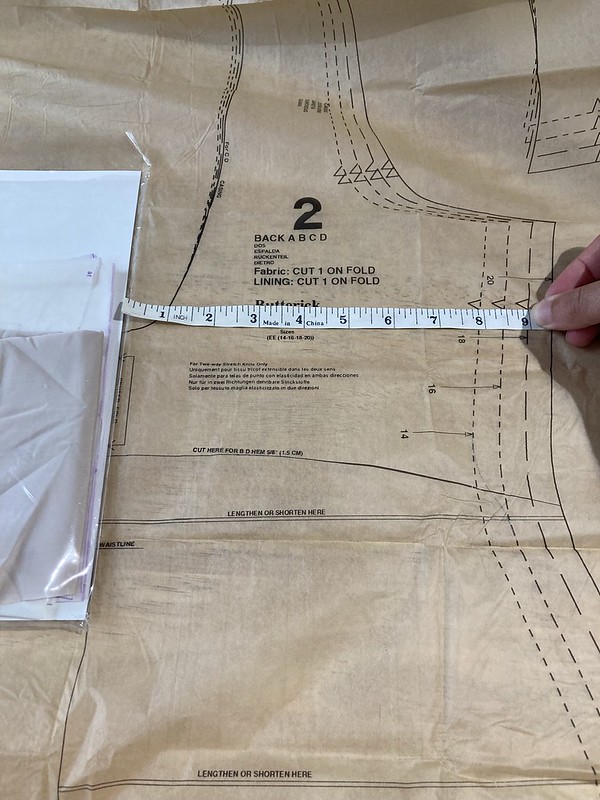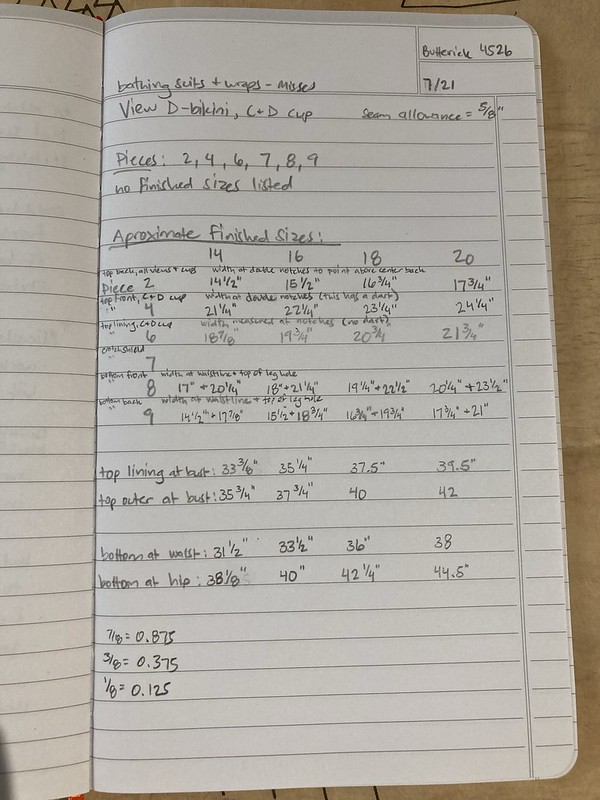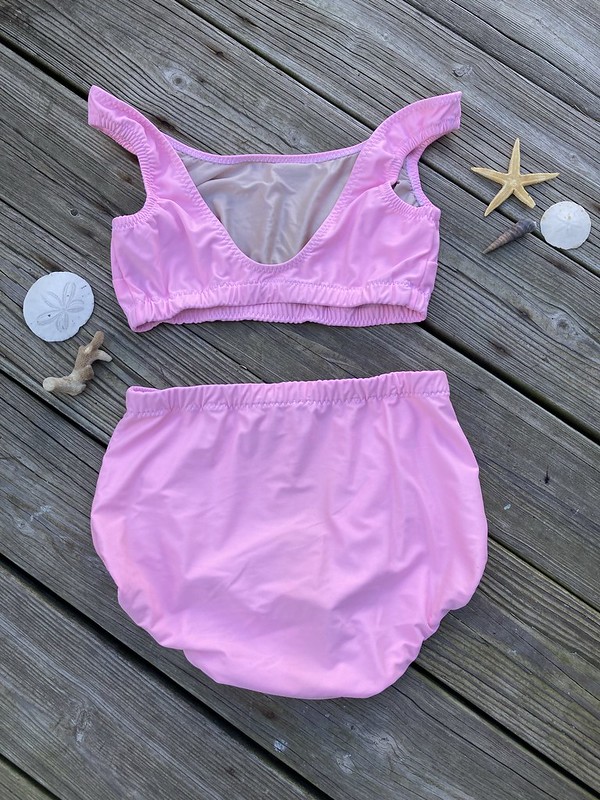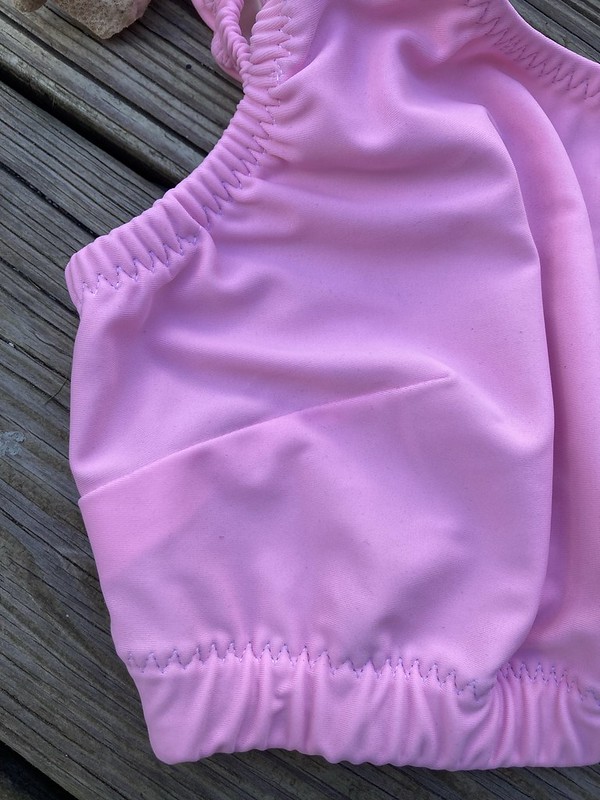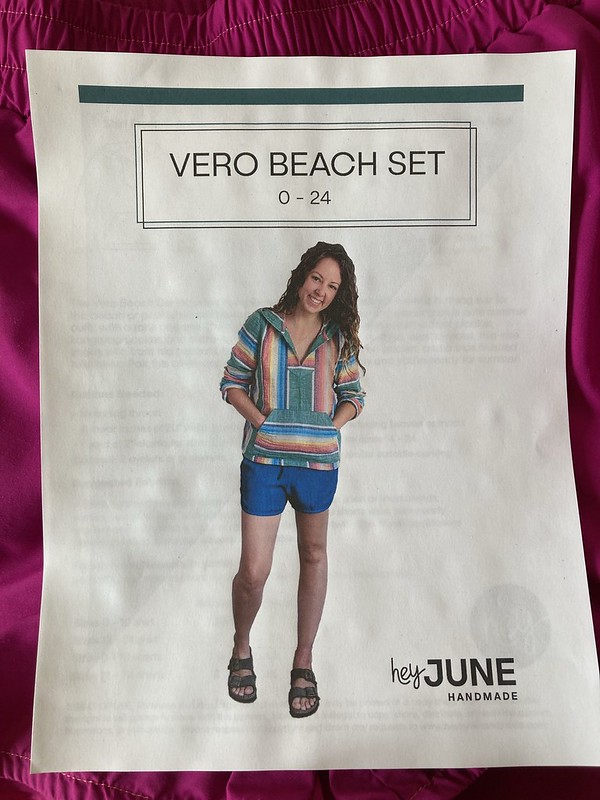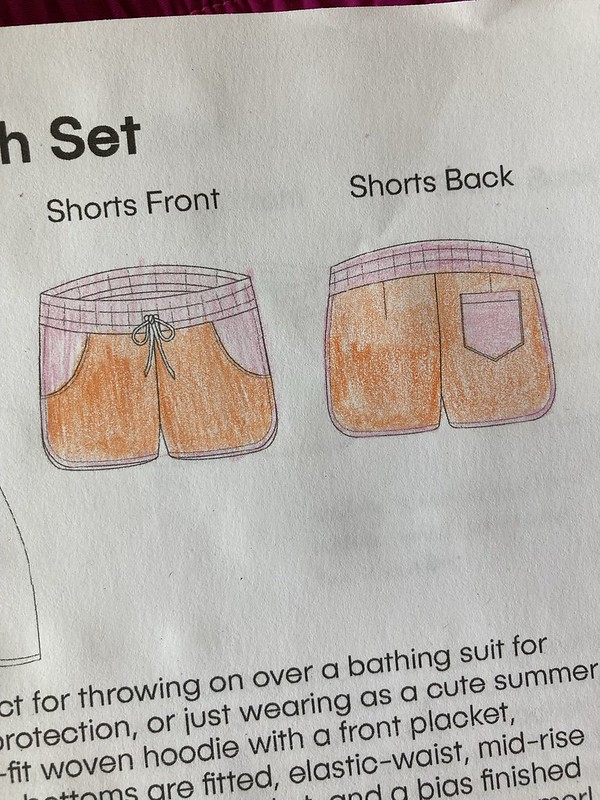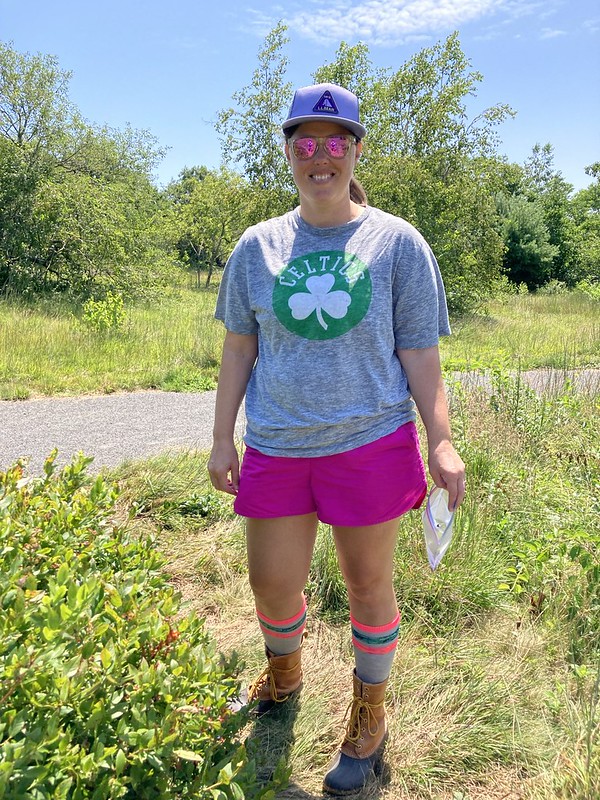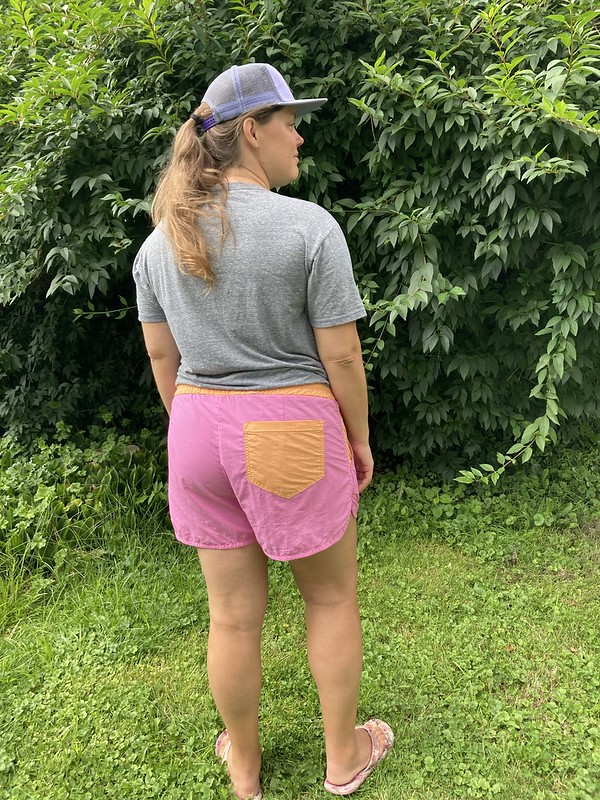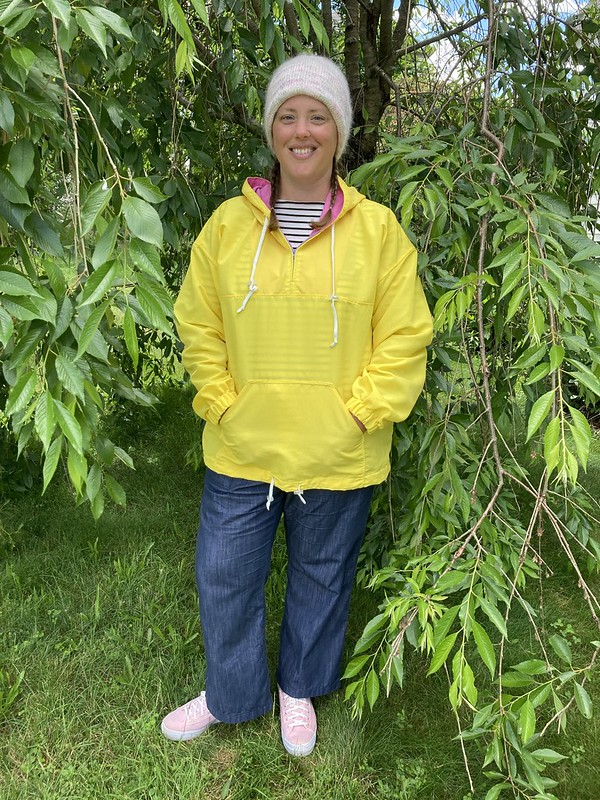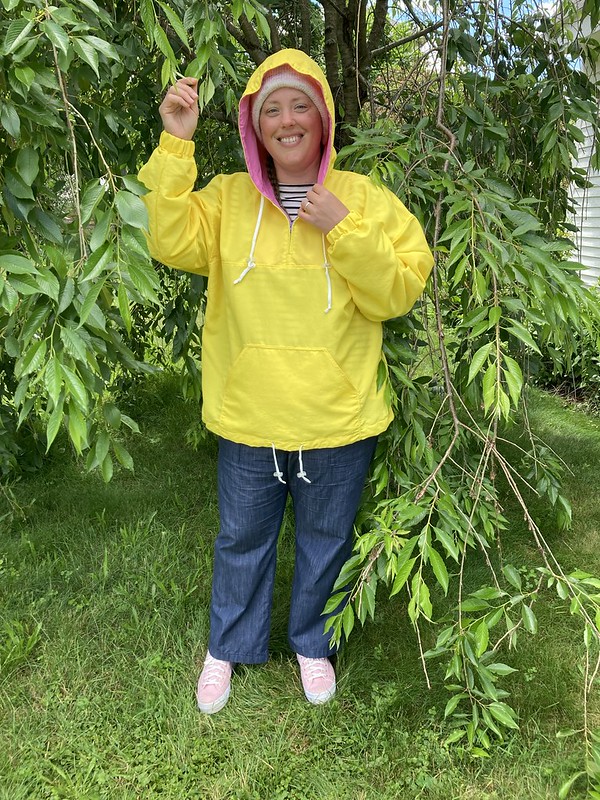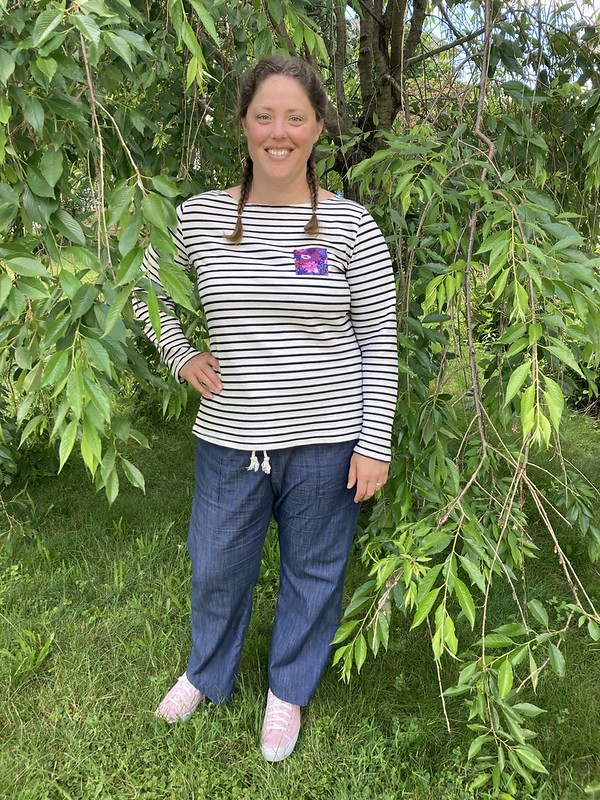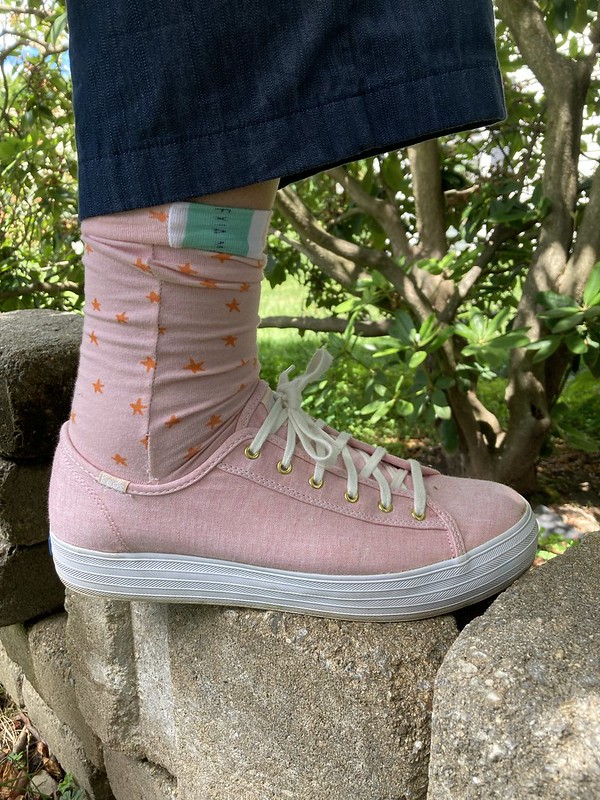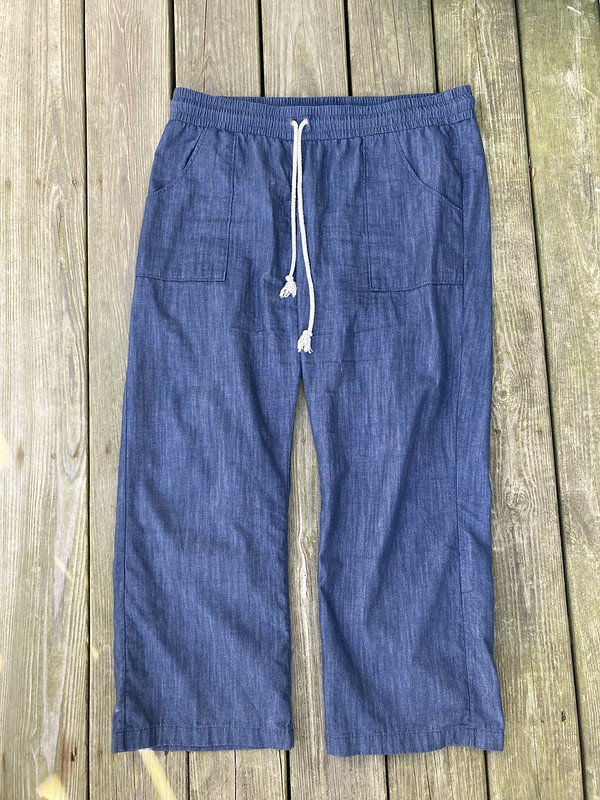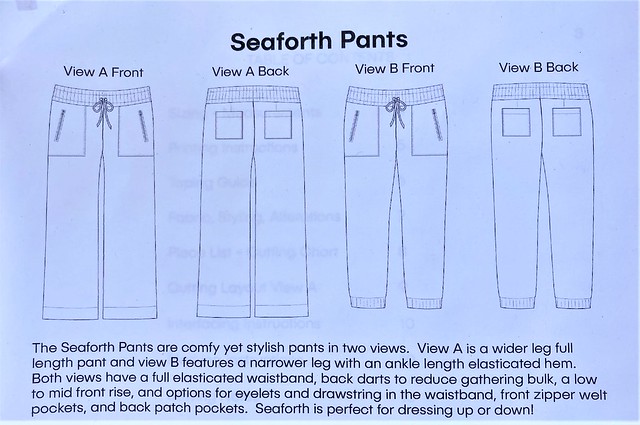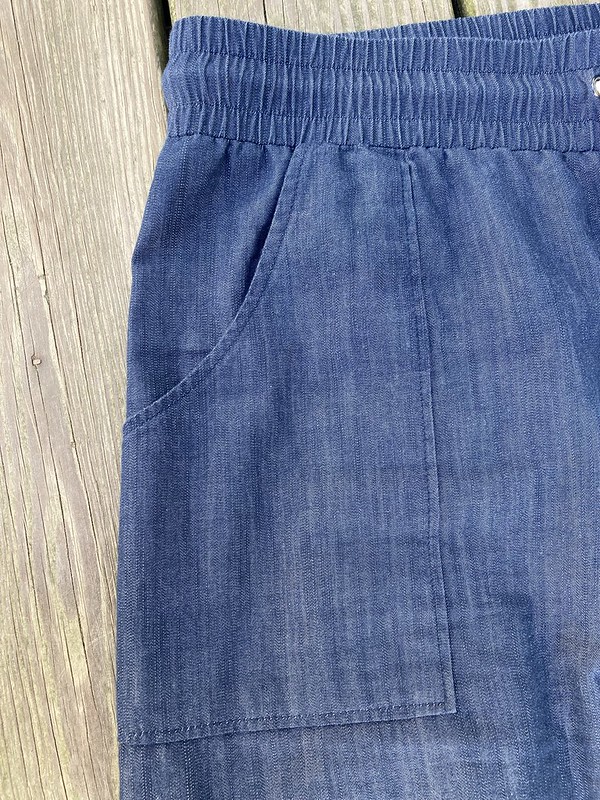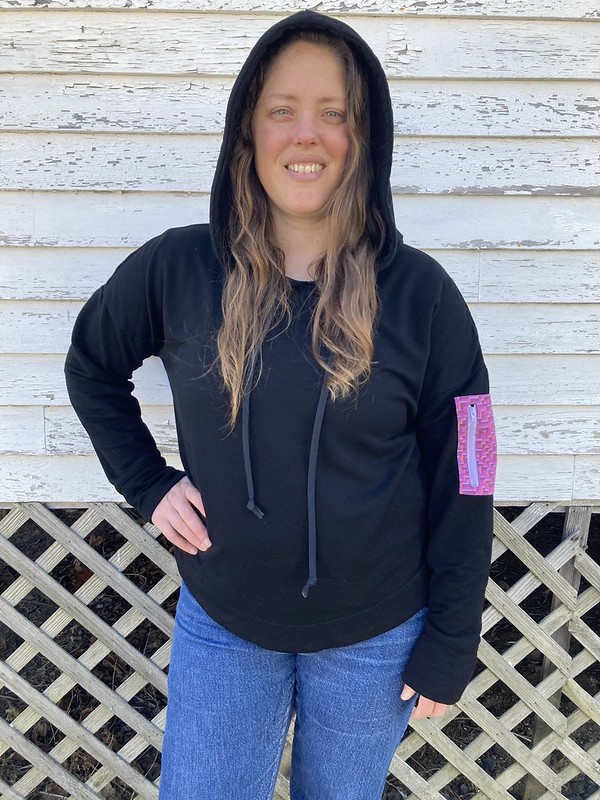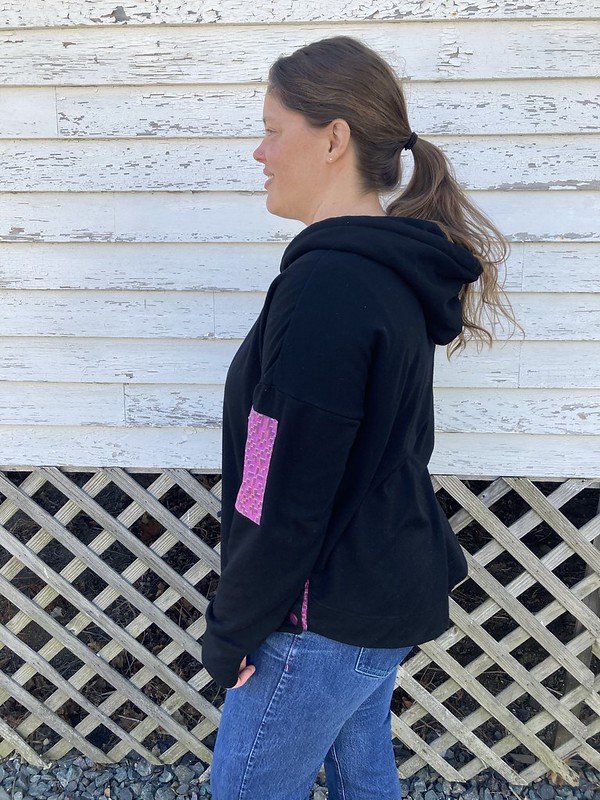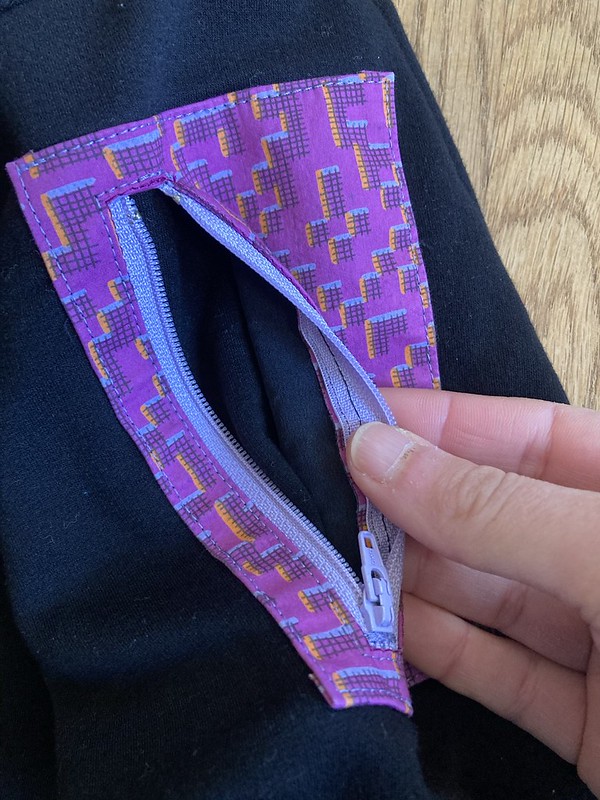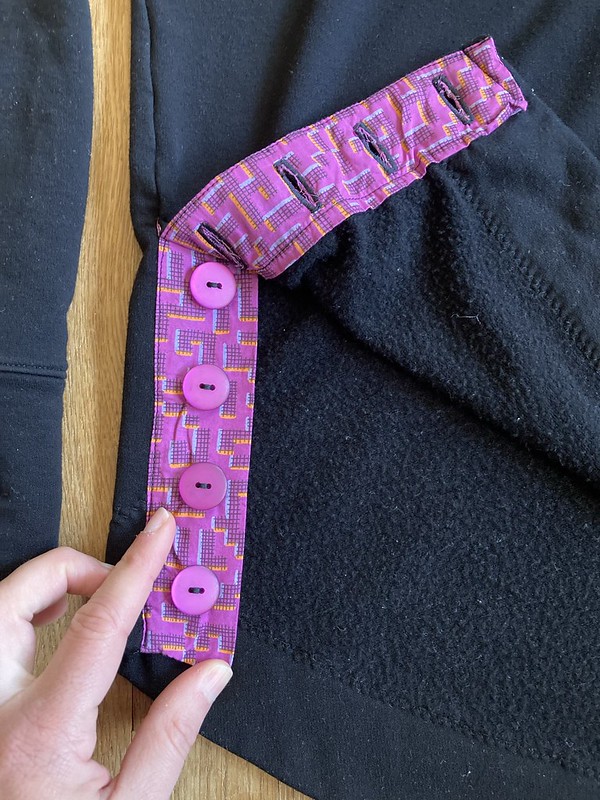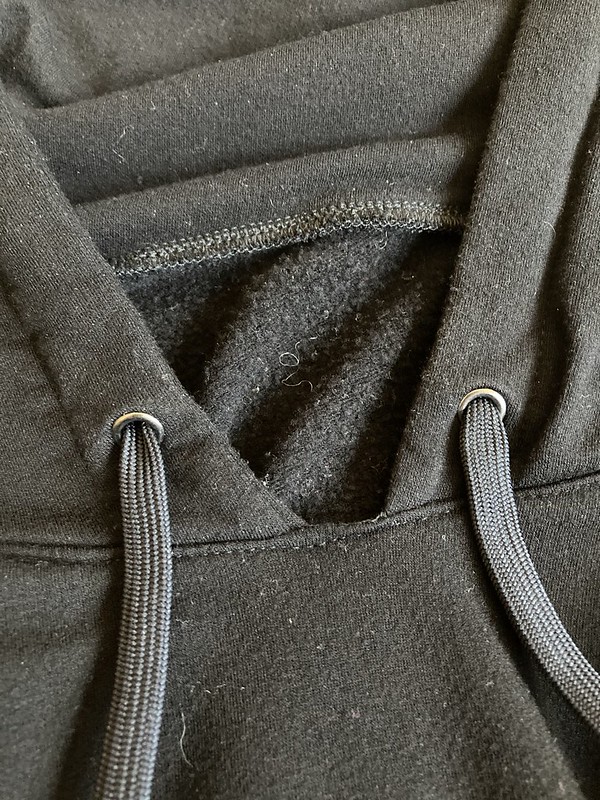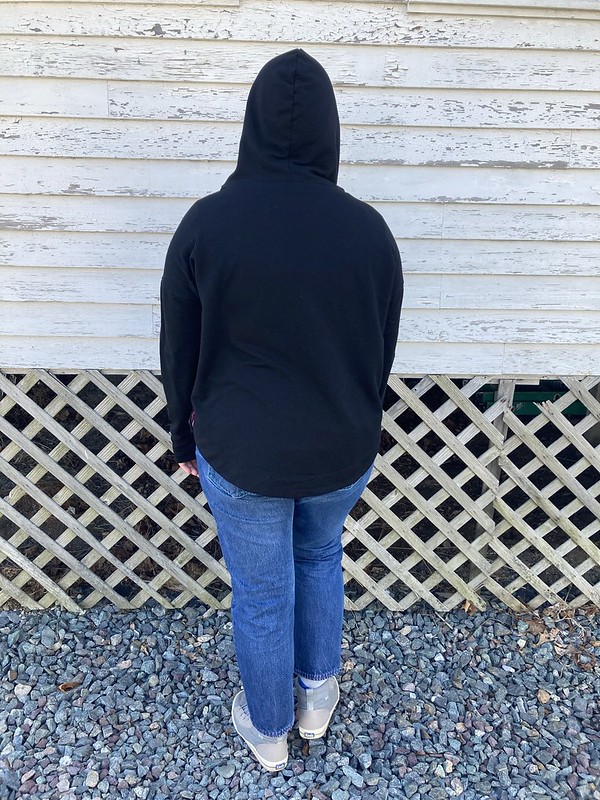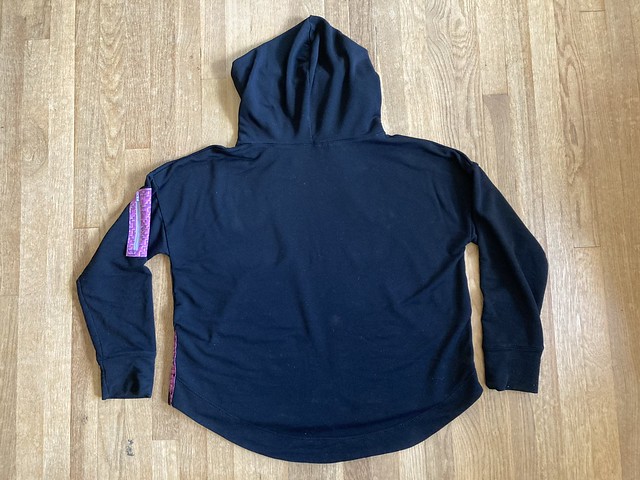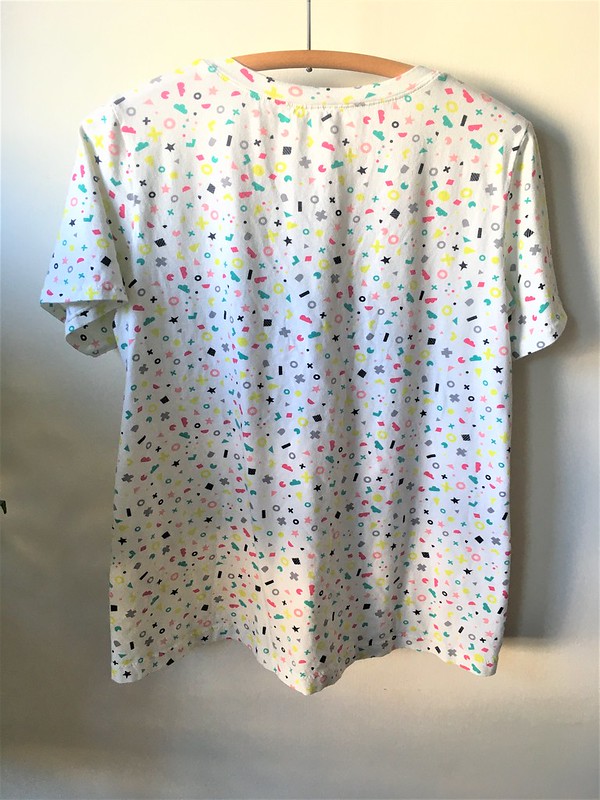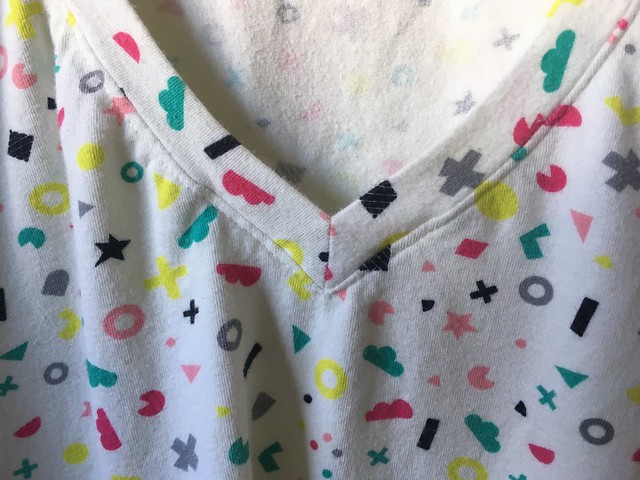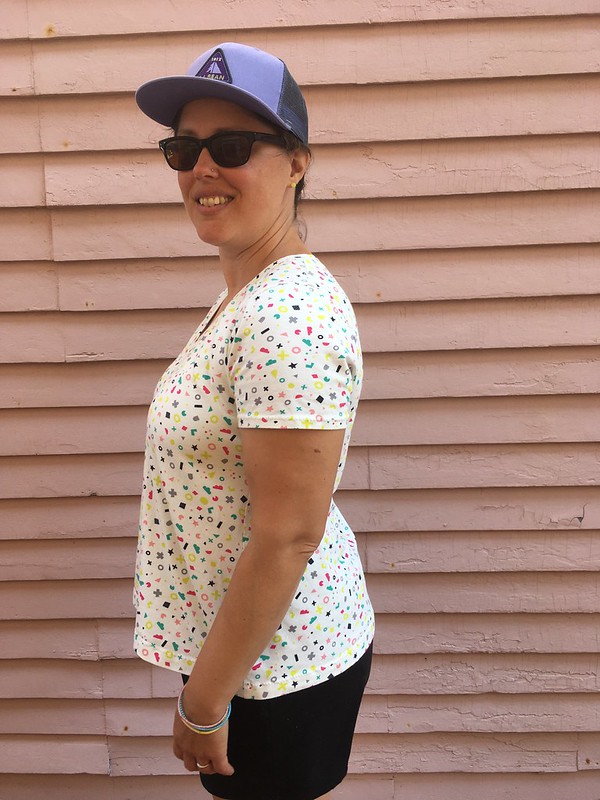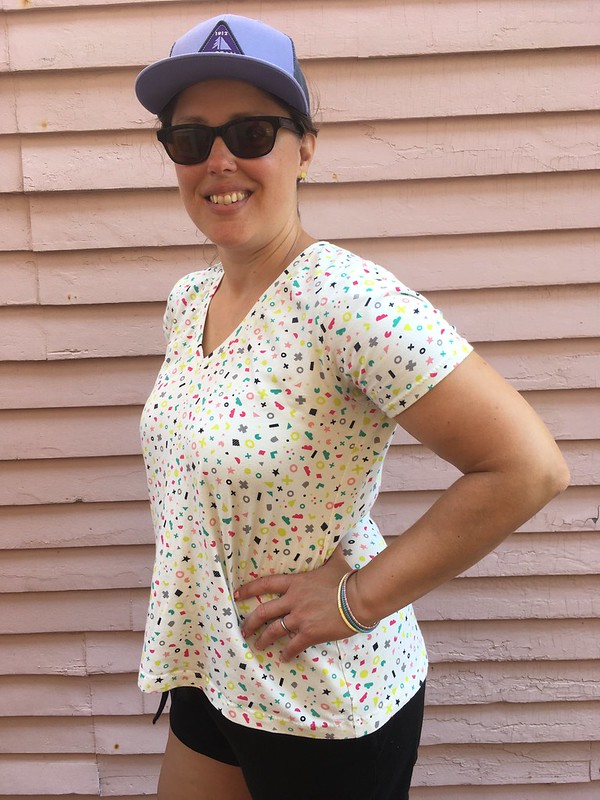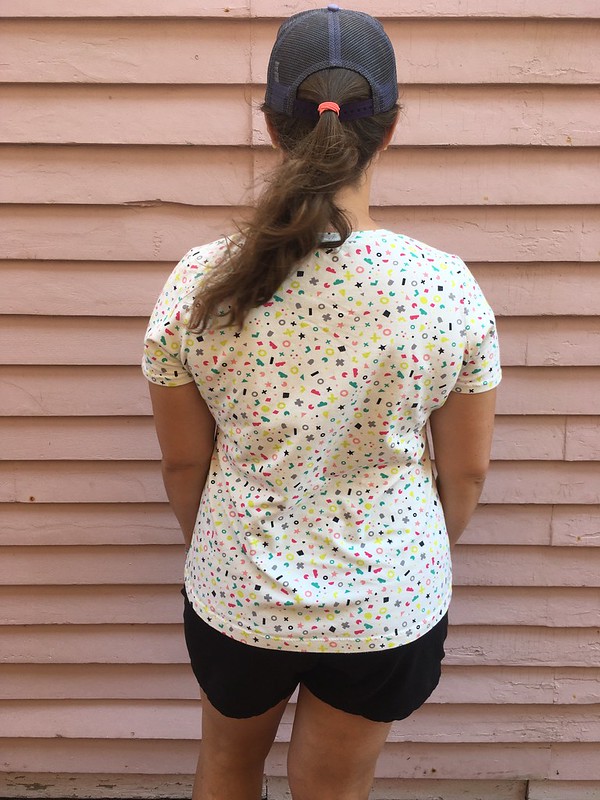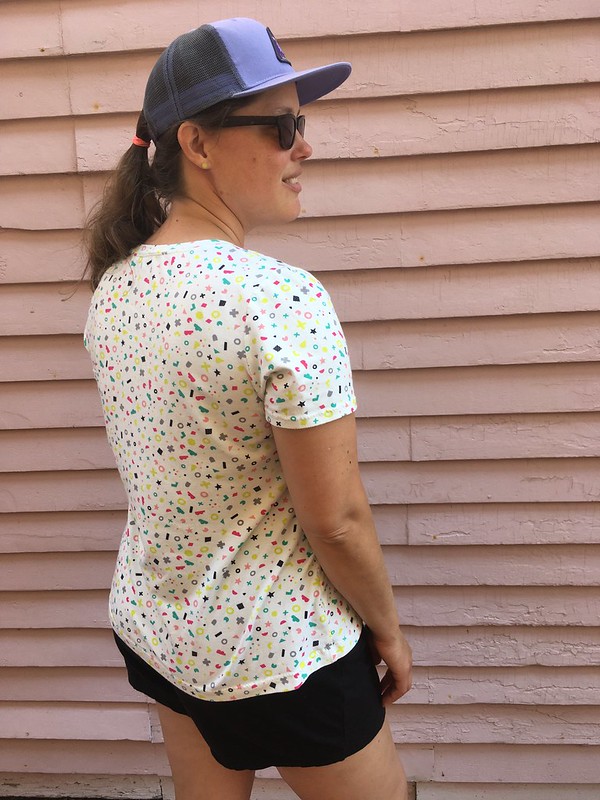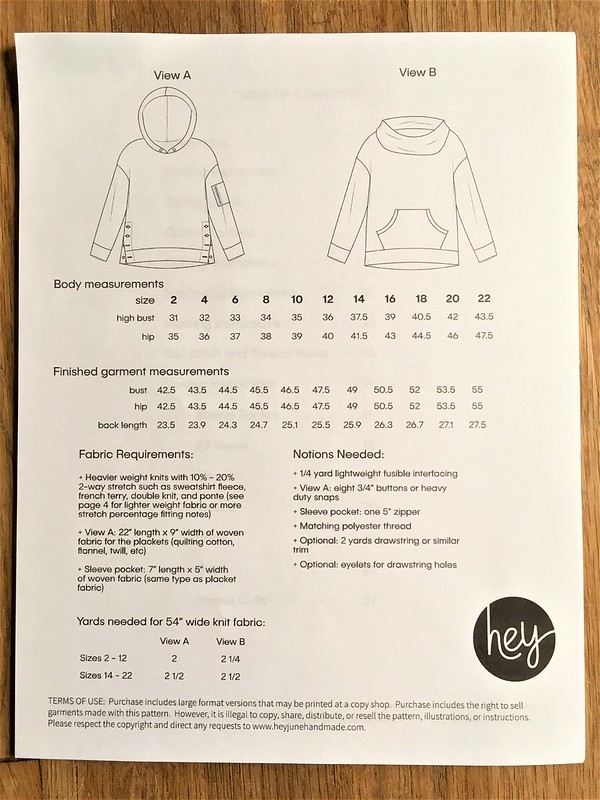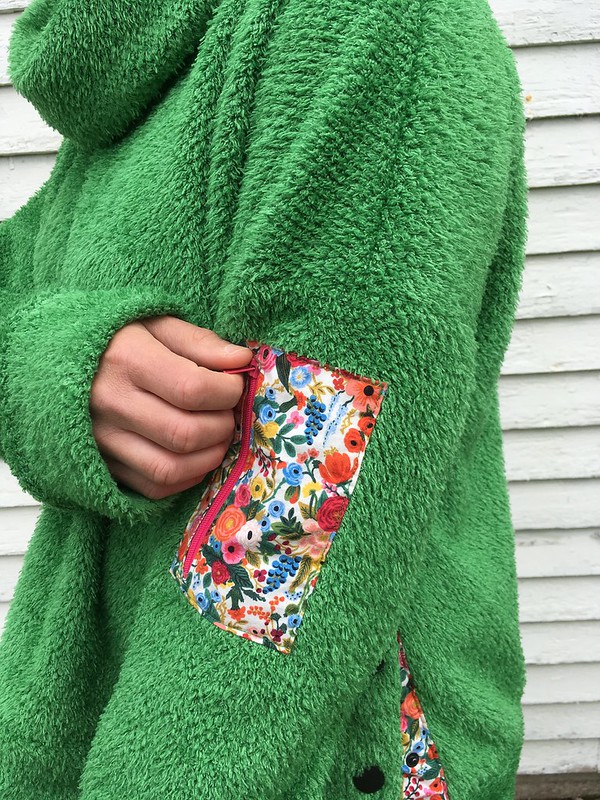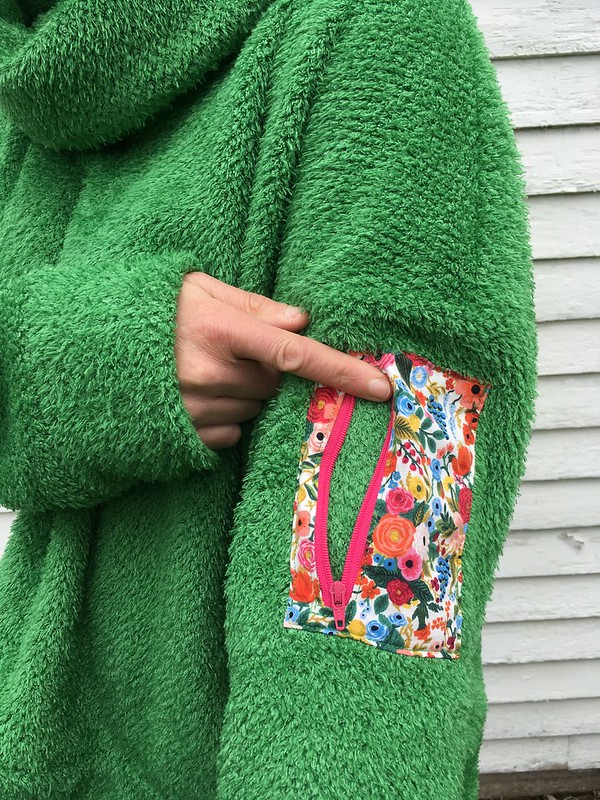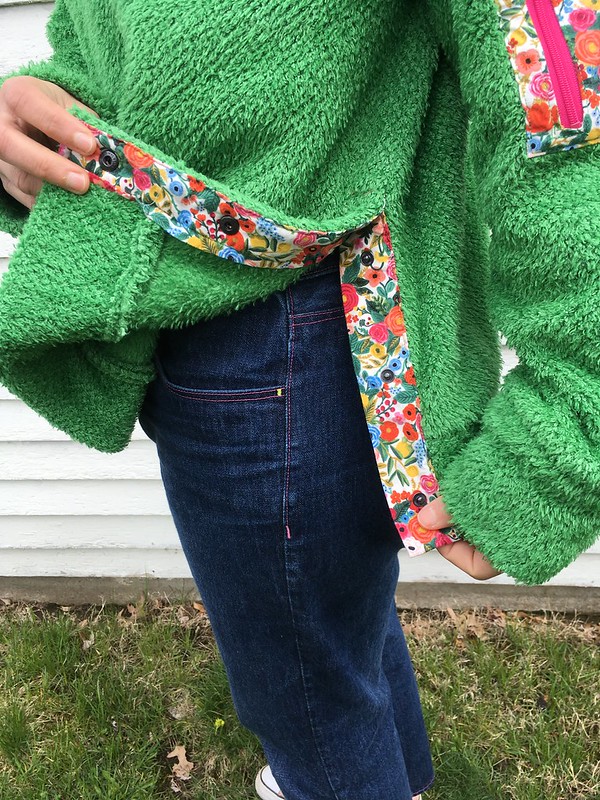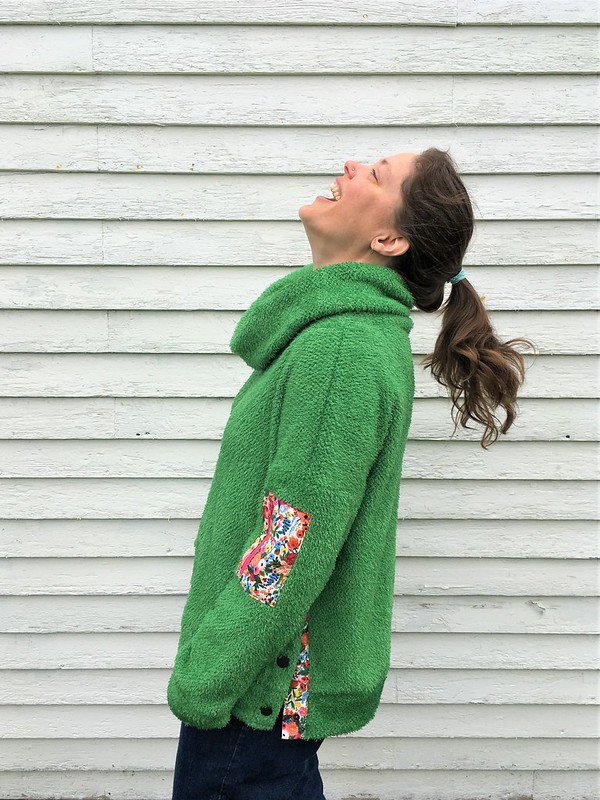
It’s funny how something can stick in your head for years, and then when the moment is right, you call it up for inspiration. Years ago, I was on the beach, talking to some other moms, and one of them was wearing a pair of shearling fleece sweatpants. They looked so cozy, and I thought what a great idea they were for a beach that is pretty much always either breezy or windy and which is usually significantly cooler than whatever town you are coming from.
Last year, as it got colder and my thoughts turned to winter sewing, I was looking through my main Polartec fabric source, Mill Yardage, and saw some neon pink shearling fleece. I love neon pink, I love shearling, and I love Polartec, so I kept it in mind. I had a few ideas of what I might want to make with it, but the strongest came in the form of that memory of the shearling fleece pants.
Mill Yardage has an inspiration board on their website, and I thought this would be an awesome addition. It said that if you sent in an idea they decided to make for the page, they would send you the same amount of fabric. These pants were a fun idea I wanted to see in the world, and if they also sent me fabric, I could make my own pants. After mulling it over for months, I e-mailed them and shared my idea.
In a short time, I received an e-mail back! They liked the idea, and asked if I would be willing to make the project. I already wanted to make this project, so I said yes! They generously offered any fabric and notions I needed from their site to make the pants, so I sent in my requests, and faster than I could have imagined, had a package of fabric at my door. I was thrilled.
Here was my plan.
I wanted to take the Seaforth Pants from Hey June Handmade, a pattern for elastic-waist, wide-leg pants drafted for woven fabrics, and use View B, which has a narrower leg as my base for this project, since I suspected the pattern could work well for knits as well as the wovens it was drafted for. I wanted to make these in fleece and add a cuff to the bottom for the coziest sweat pants ever. I didn’t want slim joggers. I wanted roomy sweat pants that would feel soft and wonderful when you put them on.
To attempt this, I chose three yards of the long-dreamed-of Polartec Thermal Pro large and small clump shearling in “hot pink” which is nice and wide at 62 inches. I liked the idea of pants with different shades of pink, but I wasn’t sure about the bulkiness of the fabrics I was choosing. I felt confident I could make the shearling work for the pants. Or maybe I just wanted the pants I envisioned so much that I was going to MAKE them work no matter what. You can form your own opinions on that. 😉 But which fabric was the right color for all the extra parts while also not being too thick? I poured over the website time and time again trying to decide. What helped me the most in the end was the box of swatches my husband got me a few years ago. I could feel the fabrics and layer them to see how thick everything would be. So, with a mix of trepidation and confidence, I requested half a yard of Polartec Classic 200 double velour/recycled fleece in “rose petal” because it was the perfect shade of pink for my vision (and 60 inches wide–yay!).
I have made View B of these pants before, so I already had the pattern pieces cut out. I tried on the pants I had made previously just to get a sense of whether or not I wanted to make any changes to the pattern, and to figure out how long I wanted them. The fit of the pattern seemed good as it was. I wanted the inseam to be about three and a half inches longer that what View B is drafted for with a cuff that was two and a half inches tall. If you were following the directions as written for View B, you would lose one and a half inches to the hem allowance, so if I didn’t fold the hem up, and used a half inch seam allowance as in the rest of the pattern, I would need a cuff that was three inches tall for a finished height of two and a half inches. I measured my ankles, did some sketching, and then made a little pattern piece out of tracing paper. I would have to see if this would work.
Putting the pants together was not hard, although the pockets required a bit of focus. I relied on my sewing machine for the pockets, using a straight stitch since I didn’t need a lot of stretch in those seams. My stitching was a little wobbly, but I knew that once I wasn’t staring at it up close, I wouldn’t notice it. I used sew-in interfacing where interfacing was necessary, because you can’t iron this fleece without melting it, and I basted and pinned things in place until I had sewn them down.
Once all the pockets were on and it was time to put the actual pants together, I got illogically nervous about whether or not they would fit. It didn’t matter that I had tried on the pair I had already made. What if I blew it and this idea didn’t work? So, to make myself feel better, I serged the inseams and crotch seam and then basted the outseams together just in case. Guess what? They were fine. The pattern hadn’t mysteriously morphed into something else. What a shock! My fears were unfounded!
It was coming out great.
So, I serged up those outseams, put on my waistband, and then got ready to figure out the cuffs.
The cuffs were about half as wide as the lower pant legs. Polartec 200 does stretch, but it was asking a lot of it to stretch so much that I could just sew those cuffs on to the bottom of the bulky Thermal Pro.
I thought about it for a few days, and then mulled over my options with my best problem solving friends. In the end, I machine stitched around the bottom of the pants with a basting stitch and then gathered them. I then hand basted the cuffs to the pants and tried them on.
They seemed good, so I used my sewing machine, which I’m more skillful with than my serger, to sew them together with a zigzag stitch.
Then I went around again with my serger to neaten everything up. And it worked! The pants were perfect!
That being said, if you decide to try this, you may have more luck making the cuffs from something really stretchy like a thinner Power Stretch or just skipping the cuffs altogether and binding the bottoms of the pants with binding or something. HOWEVER, if you are as stuck on an idea like this as I was, the old adage holds true that where there is a will, there is usually a way.
When I finished these, I was THRILLED. These pants were exactly what I was going for! Spring may be right around the corner, but at least where I live in New England, these pants will get more wear than just in winter (these will come to the beach with me). Here is what I can tell you about wearing these. They are extremely soft, and they are extremely warm. That Thermal Pro is no joke. As soon as I put these on, I felt the warmth.
In our area, as soon as there is a whiff of spring and a nice-ish day, people kind of lose it and race to the beach. Seriously. People do not waste nice weather here. So, naturally, I had to go too. 😀 The beach was probably twenty degrees (Fahrenheit) cooler than our town and windy, which was perfect for testing the pants. The wind does come through a bit, but less so than, say, this sweatshirt I made.
If you were wearing this fabric in winter with a base layer, you would probably feel pretty good. For a cool, but not bitterly cold wind, it was just right. You can easily believe that I saved all my scraps in the hopes of more fun projects when the temperature dips again next fall/winter.
I think that all the things recommended on the website for this shearling fabric (coats, vests, heavy blankets) would be perfect applications. For instance, wouldn’t this be a fun lining for a winter-worthy jean jacket? Or a shearling vest? And, the Polartec 200 was not too bulky for all my accent pieces. In fact, it was just right. I would say it feels just a little bit thicker than a beefy t-shirt.
After sewing this pattern in fleece, I have a few tips on ways to reduce bulk if you try this yourself.
Increase the seam allowance on the pockets where they are topstitched to the pants just a bit to make them even easier to sew on. When folding those same seam allowances under, cut out a little square where they overlap right at the corner. Just don’t cut too far in. On your back pockets, just fold the tops over once and stitch down since the raw edge won’t fray. I would also probably eliminate the back darts on the pants. If you opt not to remove the darts, you can cut the dart folds open on the inside after sewing them rather than folding them to the side to make things a little less bulky in the back.
Anyone can have regular sweat pants, but it’s the people who make their own clothes who can have extraordinary sweat pants. 😉
Thanks again to Mill Yardage for providing this excellent fabric. As of this writing, both fabrics look like they are still available.
I’ll leave you with this song and dance from the Movie “Funny Face”. Think pink!



